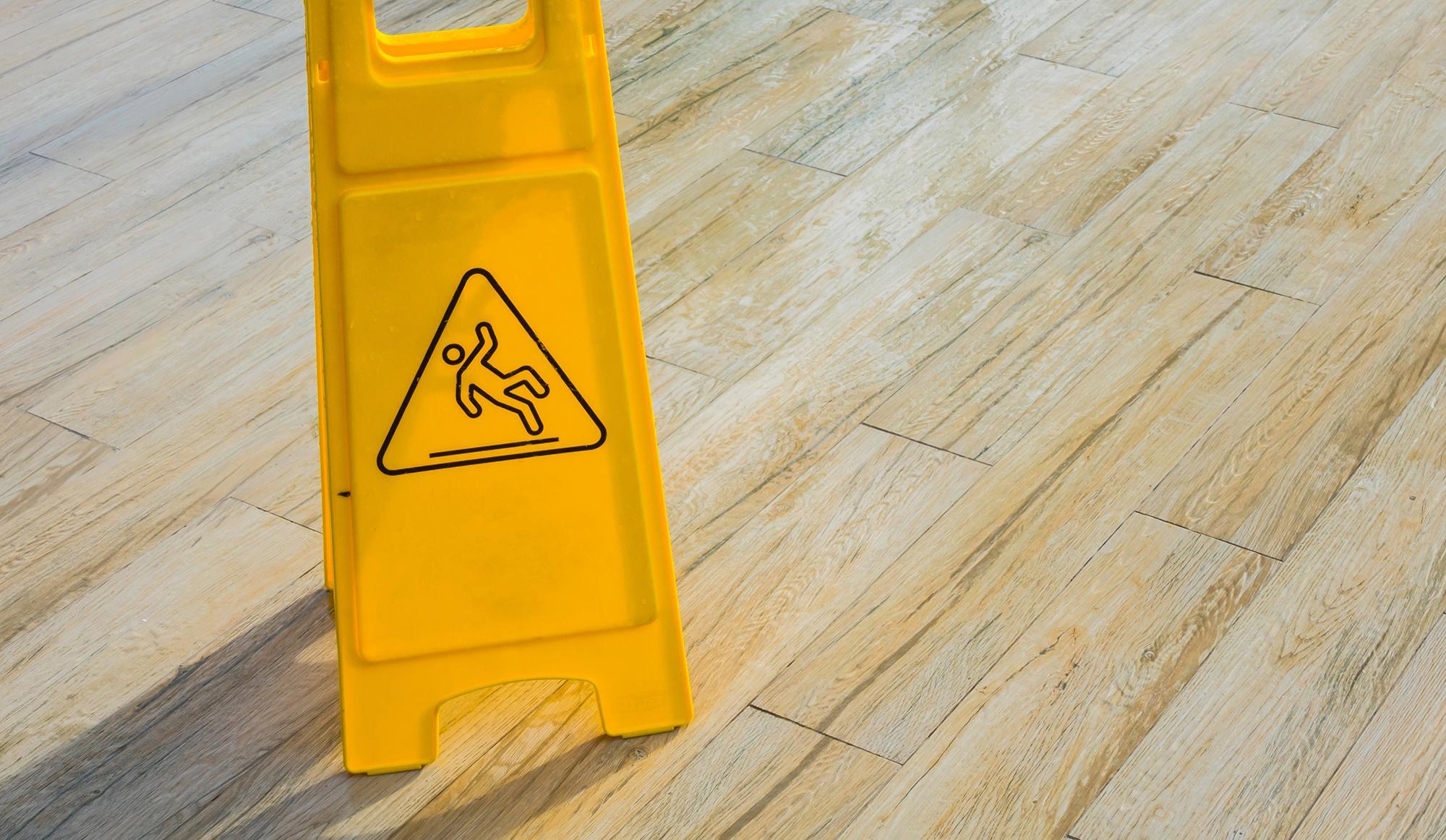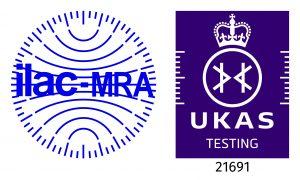It is not uncommon to find slip ratings on flooring products such as tiles and laminate. These are usually represented as R-values or Pendulum Test Values (PTV).
Whilst many flooring professionals rely on R-values or PTV as a measure of slip resistance, these are commonly misunderstood. Following guidance by the Health & Safety Executive (HSE) and UK Slip Resistance Group (UKSRG), use of the Pendulum Tester is becoming more prevalent due to its portability, cost-effectiveness and suitability on a wider range of flooring surfaces.
In this post we take a closer look at the Ramp test and Pendulum testing procedures, and their respective applications, benefits and disadvantages.
What is a Ramp Test?
The Ramp Test involves an active participant standing on a ramp protected by a fall restraint harness. The operator, wearing standard footwear or barefoot (depending on the standard), walks backwards and forwards over a sample of a flooring material that has been evenly coated with a contaminant – either oil or soapy water depending on the standard. The test starts with the ramp in a horizontal position; the operator gradually increases the angle of inclination until the limit of safe walking is reached and the test person “slips”. The acceptance angle obtained is used to express the degree of slip resistance (the “R” value). The German ramp test method is recognised worldwide (Europe, Australia, New Zealand, Singapore and the Ceramic Tile Institute of America (CTIOA)).
3 types of Test methods:
DIN 51130: A German standard that uses a cleated work boot and oil. A common problem is interpreting the data produced. It is presented as a scale running from R9 (the most slippery) to R13 (the least slippery). It is a common misconception that the scale starts at R1 and that R9 is therefore a safe rating.
DIN 51097: A German standard that tests slip resistance of flooring in barefoot conditions using soapy water as a contaminant. Results are presented in a scale running from A (most slippery) to C (least slippery).
HSL ramp test: The HSL ramp test forms the basis for the British Standard (BS 4592) and uses footwear soled with slider 96 rubber and clean water as a contaminant. Results are presented as CoF (co-efficient of friction). A version of this test can be used to test footwear.
What is Pendulum Testing?
Also known as the British Pendulum Tester, the Portable Skid Resistance Tester was originally designed in the 1940s to measure the slip resistance of floors in government buildings. During the late 1950s, the instrument was adopted and redesigned to study problems in the design and maintenance of public highways, and to test the frictional resistance of new roads, road markings and iron works.
Today, the Portable Skid Resistance Tester is most commonly used to test the slip resistance of roads, pedestrian walkways, office surfaces, shopping malls floors, factories, airports and sports facilities – both at the design stage, after installation and in the investigation of accidents.
Test Methods:
Tests can be carried out in accordance with a variety of different standards. These include BS EN 13036-4, BS 7976-2, BS EN 1097-8, BS 812-114, ASTM E303, AS 4586 and AS 4663. These are broadly similar, but there are some minor variations. Unlike the Ramp Test, tests can be carried out In-situ.
Benefits of R Numbers:
- The ramp test can produce very consistent results. The person walking on the ramp is trained to walk a specified pace to reduce variations.
- Ramp testing can be used to test mats and surface coverings that may be unsuitable for the Pendulum.
- The ramp test can test floors and footwear and provides results in terms of coefficient of friction (CoF).
- The ramp test can assess a specific sole, heel material or tread pattern and can be used on a variety of flooring types.
Disadvantages of R values and Ramp Testing:
- Ramp testing uses oil or soap as the contaminant, whereas water is more commonly implicated in slip accidents
- Ramp tests are unsuitable for assessing the effectiveness of cleaning regimes or changes in the performance of the floor that may take place over time
- The Ramp Test is laboratory based and cannot be carried out in-situ on flooring that has already been installed.
- Interpretation of the R values isn’t straightforward. Each ‘R’ value contains a range of possible results making it difficult to ascertain how slippery a floor is.
- Tests are expensive and usually must be carried out by a third party
- German Ramp Test standard uses a cleated work boot and oil as the contaminant. If this is not representative of the area where the floor will be installed, the results may be misleading.
Benefits of Pendulum Skid Resistance tester and PTV:
- The preferred test method of the Health & Safety Executive (HSE), the UK Slip Resistance Group (UKSRG) and the Tile Association in the UK.
- Used extensively for large-scale commercial projects
- Can provide results in both wet and dry conditions
- Can be operated by one person
- Can be used in situ to assess the slip risk of floors that have been already installed
- Can be used to test small samples.
- Can be used to assess the effects of cleaning regimes and repeated footfall on surfaces.
- Contaminant doesn’t only have to be water – Can be any potential real-life contaminants
- Instruments can be used by businesses internally without the need for expensive third-party testing.
- Straightforward to use.
- International recognised.
- Can simulate a shoe sole or bare foot.
Disadvantages of PTV and Pendulum Skid Testing:
- Although the equipment is portable, it is on the heavy side (12.5 kg).
- Testing process can be time consuming
- Test standards are not streamlined worldwide
- Not widely recognised in United States of America
Which is more cost effective?
The Ramp Test is a large fixed piece of equipment designed for use in a laboratory only. It can be used to assess how different types of flooring surfaces perform with different types of footwear. However, owing to its size, testing can only be performed before a floor is laid,
The Pendulum Tester is portable, meaning tests can be carried out on site without having to remove a sample. This also provides a more accurate picture of the real-life slip risk. The Pendulum can also be used by tile and flooring companies to carry out internal product testing quickly and easily. This can assist with R&D and offering better customer recommendations.
Overall, the Pendulum tends to be much more cost effective option. Due to the size of the Ramp Test, the need for trained operators and strict laboratory conditions, ramp testing is significantly more expensive. Pendulum tests also tend to be the quicker option, meaning they are ideal in situations where results are needed promptly.
The Health and Safety Executive (HSE), UK Slip Resistance Group (UKSRG) and Tile Association (TTA) recommend the Pendulum test method for assessing slip resistance.
For further information about the Pendulum Skid Resistance Tester, get in touch via email (met@munro-group.co.uk) or by telephone (+44 (0) 20 8551 7000).








